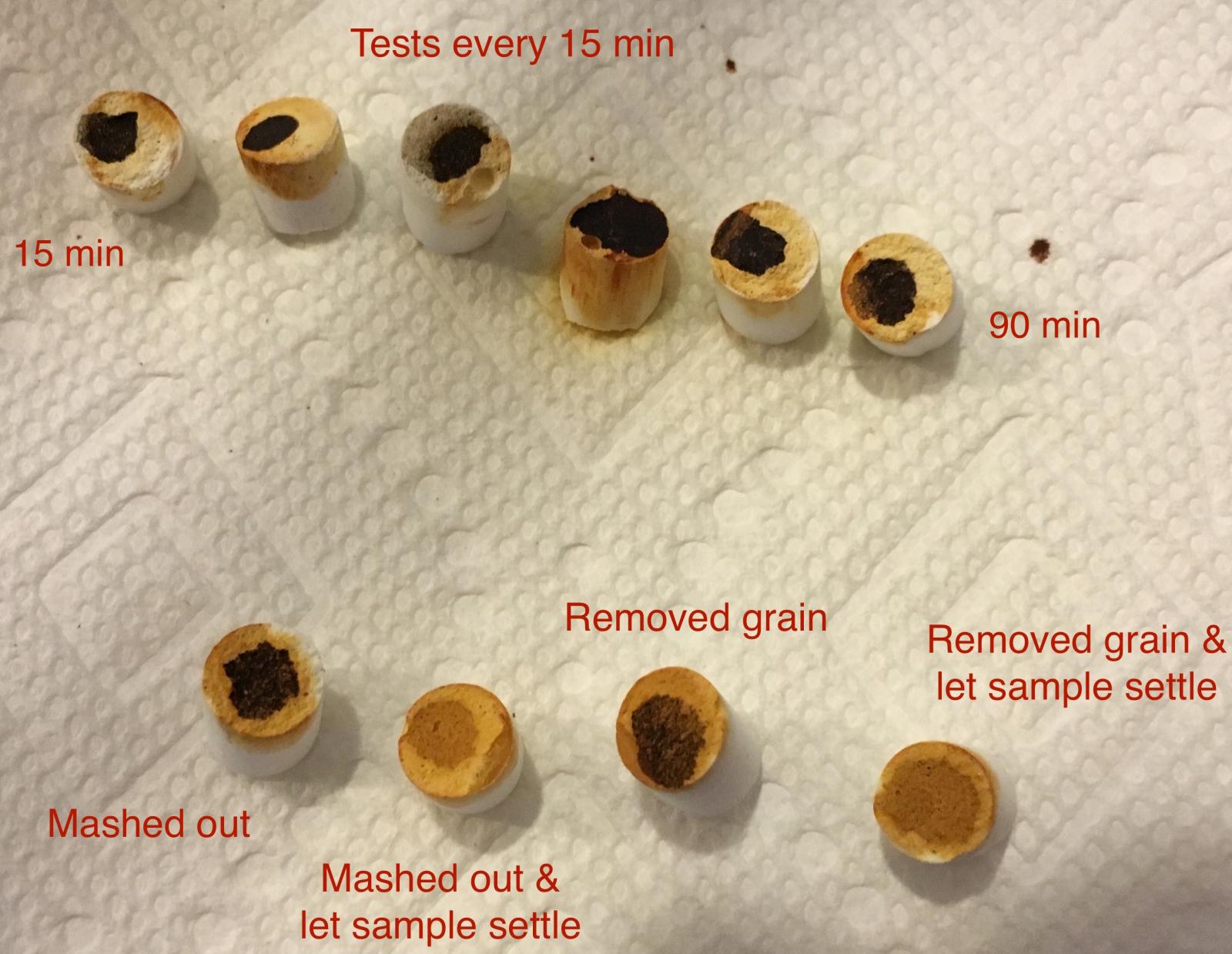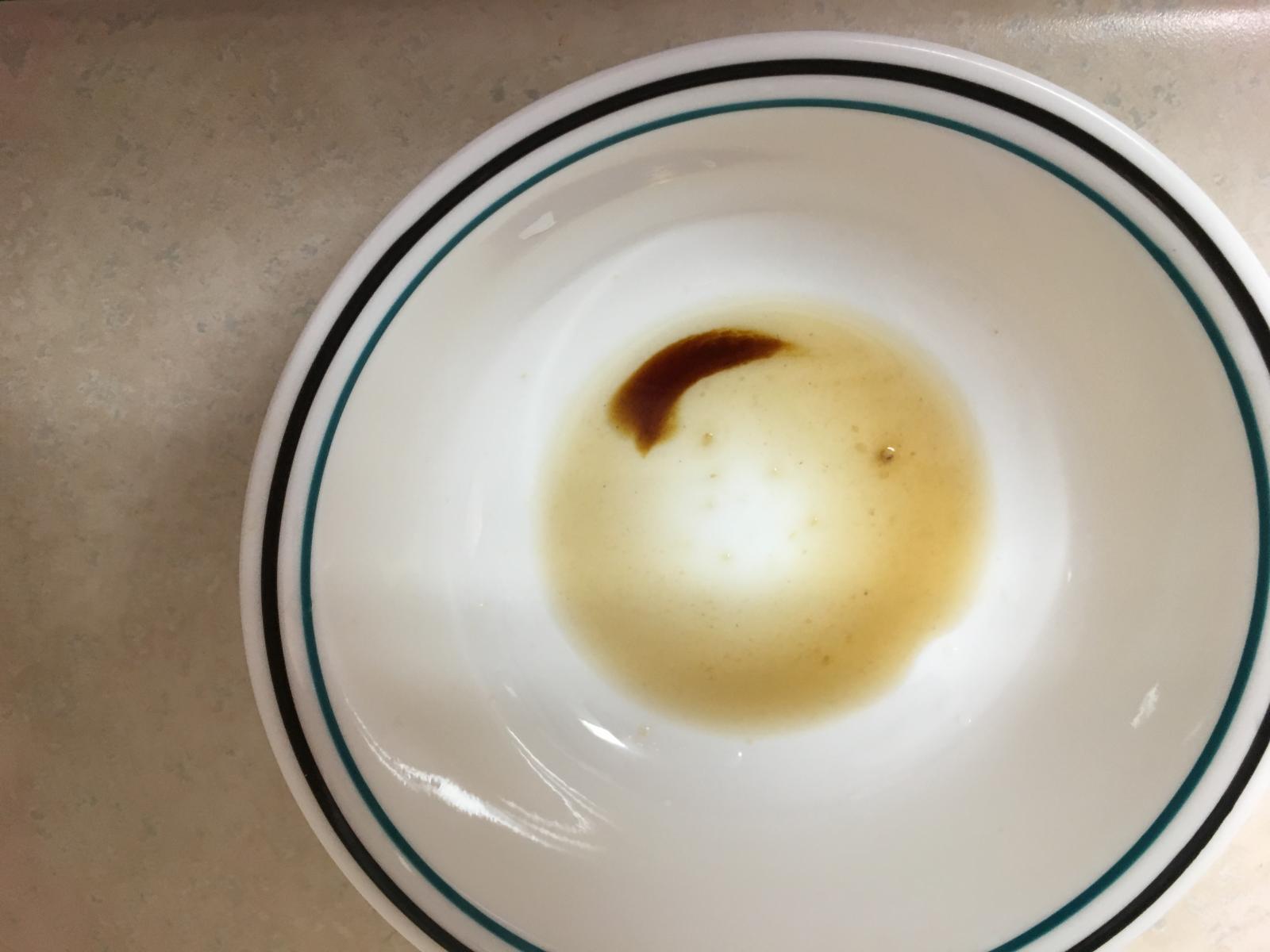GlowingApple
Well-Known Member
I brewed an amber ale today and decided to try using chalk for an iodine test (did a vial test for my previous couple of all-grain brews). Even after mashing for over 90 minutes the test still wasn't negative on chalk. In the vial it looked negative, but the color is really hard to tell in solution.
After 30 and 60 minutes it looked like B in the image from Braukaiser: http://braukaiser.com/wiki/images/4/42/Iodine_test.jpg
After 90 minutes it actually got darker (darker than B, not quite as dark as A though). Even after 105 minutes it still was closer to B than C.
I carefully decant the wort so there shouldn't be any grain hulls.
I mashed at 152 ˚F. My mash tun is losing about 4 ˚F/hr, so it was somewhat low toward the end of mashing, but the specific gravity (by refractometer) pretty much leveled off at my calculated pre-boil SG around 90 minutes (30 min = 1.040, 60 min = 1.046, 90 min = 1.048, 105 min = 1.049, bringing to a boil = 1.048), so I can't imagine there were unconverted starches after 105 minutes.
Any ideas what went wrong?
After 30 and 60 minutes it looked like B in the image from Braukaiser: http://braukaiser.com/wiki/images/4/42/Iodine_test.jpg
After 90 minutes it actually got darker (darker than B, not quite as dark as A though). Even after 105 minutes it still was closer to B than C.
I carefully decant the wort so there shouldn't be any grain hulls.
I mashed at 152 ˚F. My mash tun is losing about 4 ˚F/hr, so it was somewhat low toward the end of mashing, but the specific gravity (by refractometer) pretty much leveled off at my calculated pre-boil SG around 90 minutes (30 min = 1.040, 60 min = 1.046, 90 min = 1.048, 105 min = 1.049, bringing to a boil = 1.048), so I can't imagine there were unconverted starches after 105 minutes.
Any ideas what went wrong?







